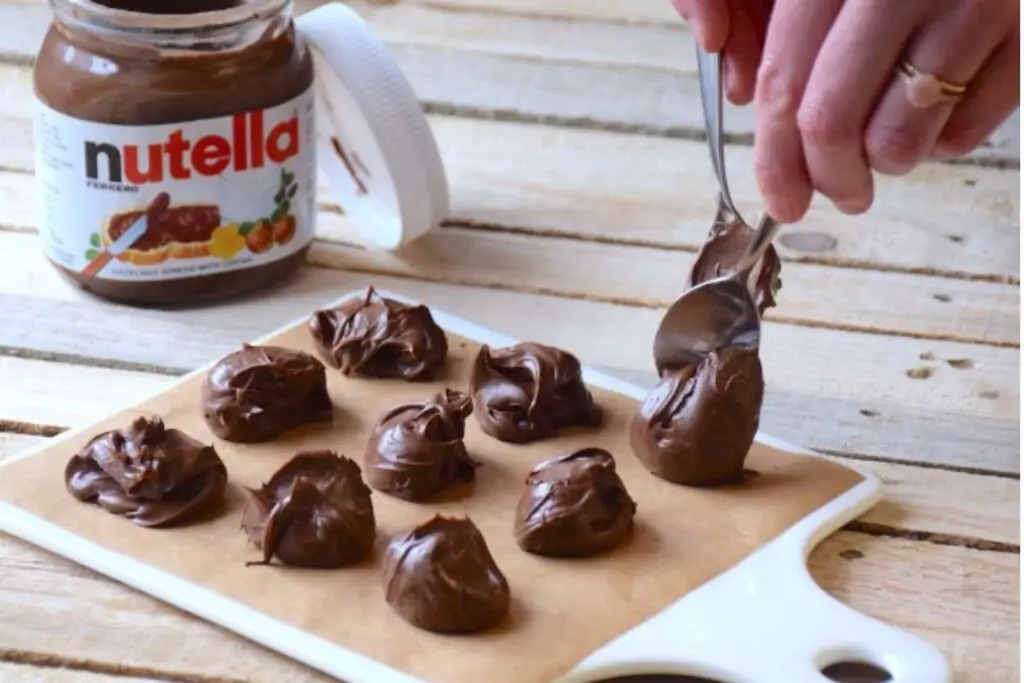
Noodles are a versatile and beloved staple in many cuisines around the world. Whether you’re a fan of spaghetti, fettuccine, or soba noodles, freezing them can be a convenient way to have a quick and easy meal on hand. Freezing noodles allows you to preserve their texture and flavor, making them a great option for busy individuals or for preparing ahead of time. In this article, we will provide you with a step-by-step guide on how to freeze noodles properly to maintain their quality for future enjoyment.
Here’s a comprehensive guide on freezing noodles:
Step 1: Select the right type of noodles
When it comes to freezing noodles, not all types are created equal. It’s essential to choose noodles that are best suited for freezing to ensure they maintain their quality after being thawed and reheated. While some noodles freeze well and retain their texture, others may become mushy or lose their distinct characteristics.
Durum wheat-based pasta, such as spaghetti, fettuccine, or penne, is an excellent choice for freezing. These noodles are made from semolina flour, which gives them a sturdy structure that holds up well during the freezing and cooking processes. Durum wheat-based pasta tends to maintain its texture and firmness even after freezing, resulting in a satisfying bite when cooked.
Egg noodles are another type of noodle that freezes well. These noodles are typically made with flour and eggs, giving them a richer flavor and a slightly softer texture. Egg noodles hold up nicely to freezing, and they can be used in a variety of dishes, from soups and stews to casseroles and stir-fries.
Rice noodles, commonly used in Asian cuisine, are also suitable for freezing. These noodles are made from rice flour and are known for their delicate and slightly chewy texture. While they may become slightly softer after freezing, rice noodles generally retain their overall quality and can be enjoyed in dishes like pad Thai or stir-fried noodle dishes.
On the other hand, delicate noodles such as vermicelli or cellophane noodles may not be the best choice for freezing. These noodles are extremely thin and delicate, and their texture can be easily compromised during the freezing and thawing process. Freezing delicate noodles can result in a mushy or clumpy texture, diminishing their appeal.
When selecting noodles to freeze, consider the type of dish you plan to use them in after thawing. Sturdier noodles like durum wheat-based pasta, egg noodles, and rice noodles are more versatile and can be used in a wide range of recipes without significant changes in texture. However, if you prefer delicate noodles like vermicelli or cellophane noodles, it’s best to cook them fresh rather than freezing them.
Step 2: Cook the noodles al dente
When preparing noodles for freezing, achieving the right level of doneness is essential. Cooking the noodles al dente, which translates to “to the tooth” in Italian, means that the noodles should be cooked until they are still slightly firm when bitten. This is crucial because overcooking the noodles before freezing can lead to a mushy texture once they are thawed and reheated.
Following the cooking instructions on the package is a good starting point to determine the recommended cooking time for the noodles. These instructions are typically designed to yield al dente noodles. However, it’s important to note that cooking times may vary depending on the type and thickness of the noodles.
To ensure the noodles are cooked to the desired texture, it’s advisable to perform a taste test. Take a strand of the cooked noodles and bite into it. The noodles should offer a slight resistance and have a firmness to them. They should not be overly soft or mushy.
Cooking the noodles al dente before freezing serves two purposes. Firstly, it ensures that the noodles maintain a desirable texture after being frozen and reheated. Freezing can cause some softening of the noodles, so starting with slightly firm noodles helps prevent them from becoming overly soft and losing their structure during the freezing and thawing process.
Secondly, al dente noodles have a better chance of retaining their individual shape and not clumping together when frozen. Overcooked noodles tend to become stickier, which can lead to clumping and difficulty in separating them when you want to thaw only a portion.
Step 3: Rinse and cool the noodles
Once you’ve cooked the noodles to the desired al dente texture, it’s important to rinse and cool them promptly. This step serves two purposes: stopping the cooking process and preventing the noodles from sticking together.
After draining the cooked noodles in a colander, rinsing them under cold water is essential. The cold water helps rapidly cool down the noodles, halting the cooking process and preventing them from becoming overcooked. This is particularly important because residual heat from the cooking can continue to soften the noodles, potentially leading to a loss of their desired texture.
Rinsing the noodles under cold water also has the added benefit of removing any excess starch clinging to the surface of the noodles. During cooking, starch is released from the noodles, and if left unchecked, it can cause the noodles to stick together when frozen. By rinsing the noodles, you remove this excess starch and reduce the likelihood of clumping.
To ensure that the noodles are evenly cooled, gently toss them in the colander while rinsing them under the cold water. This helps distribute the cool water among the noodles, ensuring that they cool down uniformly. It’s important to handle the noodles gently to avoid breaking or damaging them.
Step 4: Portion the noodles
After rinsing and cooling the cooked noodles, the next step in freezing them is to portion them into individual servings. Portioning the noodles based on your future serving sizes offers convenience and helps minimize waste.
By dividing the noodles into individual portions, you have greater control over how much you thaw and use at a given time. This is particularly useful if you don’t plan to consume the entire batch of noodles in one sitting. Portioning allows you to take out only the amount you need, reducing the need to thaw and refreeze the noodles repeatedly, which can affect their quality over time.
To portion the noodles, consider your typical serving sizes or the amount you would like to use for a particular recipe. You can use measuring cups or simply estimate based on your preference. For example, you might portion the noodles into one-cup servings, or you might portion them based on the number of people you typically serve.
Dividing the noodles into individual portions also makes it easier to thaw them evenly. It reduces the likelihood of large clumps or uneven thawing, as smaller portions tend to thaw more quickly and uniformly compared to a large frozen mass.
Additionally, portioning the noodles helps prevent unnecessary waste. If you freeze the entire batch of noodles without dividing them, you might end up thawing more than you need, leading to leftovers that may go to waste. By portioning them beforehand, you can minimize food waste and have better control over your portions.
Consider using freezer-safe containers or resealable plastic bags to store each portion separately. This allows for easy identification and retrieval when you’re ready to thaw and use the noodles.
Step 5: Prepare the noodles for freezing
Once you have portioned the cooked noodles, the next step is to prepare them for freezing. The method of preparation varies depending on the type of noodles you are freezing.
For long noodles like spaghetti or fettuccine, it’s best to gather small portions and twirl them into nests. This helps prevent the noodles from tangling or clumping together during freezing. To create a nest, take a small portion of the noodles and gently twirl them into a loose bundle, resembling a bird’s nest. Repeat this process with each portion of noodles.
To prevent the nests from sticking to each other or the baking sheet, it’s advisable to line the baking sheet with parchment paper. This creates a barrier between the noodles and the surface, reducing the risk of sticking. Place each nest on the parchment-lined baking sheet, making sure they are spread out and not touching each other.
On the other hand, for smaller noodles like penne or macaroni, it is not necessary to create nests. These noodles can be left loose but spread out on the baking sheet. Ensuring that the noodles are spread out in a single layer helps prevent them from clumping together and makes it easier to handle them when freezing and thawing.
By arranging the noodles in nests or spreading them out on a baking sheet, you create individual portions that freeze separately. This method is particularly beneficial when it comes to thawing and using only a portion of the frozen noodles. Since the noodles are not frozen together in a solid block, it’s easier to take out the desired amount without having to thaw the entire batch.
Furthermore, preparing the noodles on a parchment-lined baking sheet prevents them from sticking to the surface, making it easier to remove and transfer them to storage containers or bags once they are frozen.
Remember to leave some space between the nests or individual noodles on the baking sheet to allow for even freezing. This prevents the noodles from freezing together and enables better airflow during the freezing process.
Are there any specific tips to prevent frozen noodles from sticking together?
To prevent frozen noodles from sticking together, there are a few tips you can follow. First, ensure that the noodles are cooled and dried thoroughly before freezing. This helps to remove excess moisture that can contribute to sticking. Additionally, you can toss the noodles with a small amount of oil or sprinkle them with flour or cornstarch to create a barrier between the noodles and prevent them from clumping together. Finally, arranging long noodles in nests or spreading smaller noodles out on a baking sheet before freezing can help maintain separation during storage.
Step 6: Flash-freeze the noodles
Once you have arranged the portions of noodles on a baking sheet, the next step is to flash-freeze them. Flash-freezing involves quickly freezing the noodles individually to prevent them from clumping together during long-term storage. Here’s how you can do it:
Place the baking sheet with the portions of noodles in the freezer: Ensure that the baking sheet is flat and stable. This will help prevent any spills or uneven freezing. Make sure there is enough space in the freezer for the baking sheet.
Allow the noodles to freeze for about 1-2 hours: The exact freezing time may vary depending on your freezer’s temperature and the thickness of the noodles. The goal is to freeze the noodles until they are firm but not completely frozen. The noodles should still have some flexibility and not be fully solid.
Flash-freezing the noodles individually serves several purposes. Firstly, it prevents the noodles from sticking together during the freezing process. By freezing them individually, you ensure that each portion remains separate, allowing for easier handling and portioning when it’s time to use them.
Secondly, flash-freezing helps preserve the quality of the noodles. The quick freezing process helps retain the texture and moisture of the noodles, reducing the formation of ice crystals and maintaining their overall integrity. This results in better texture and taste when the noodles are later thawed and reheated.
Lastly, individually frozen noodles are more convenient for portion control. When you want to use a specific amount of noodles, you can easily remove just the desired portions from the freezer without having to thaw the entire batch.
Step 7: Transfer to freezer-safe containers or bags
After flash-freezing the partially frozen noodles, it’s time to transfer them into appropriate freezer-safe containers or resealable plastic bags. This step is crucial for protecting the noodles from freezer burn and maintaining their quality during long-term storage. Here’s how you can do it:
- Prepare freezer-safe containers or bags: Ensure that the containers or bags you’re using are specifically designed for freezer storage. These containers or bags should be able to withstand low temperatures without cracking or developing leaks.
- Transfer the noodles: Carefully lift the partially frozen noodles from the baking sheet and place them into the containers or bags. For larger noodles, such as spaghetti or fettuccine nests, you can stack them inside the containers. For smaller noodles, such as penne or macaroni, you can simply pour them into the bags.
- Squeeze out excess air: Before sealing the containers or bags, try to remove as much air as possible. Excess air can contribute to freezer burn, which can affect the quality of the noodles over time. Press down gently on the noodles or use a straw to remove air from the bags. Once the air is removed, seal the containers or bags tightly.
- Label with the date: It’s important to label each container or bag with the date of freezing. This allows you to keep track of their freshness and ensures that you can prioritize the oldest noodles for consumption. Use a marker or adhesive label to write the freezing date clearly on each container or bag.
Transferring the partially frozen noodles to freezer-safe containers or bags is crucial for long-term storage. The containers or bags provide an extra layer of protection against freezer burn, which can occur when the noodles are exposed to air and moisture in the freezer. By sealing the containers or bags tightly and removing excess air, you minimize the risk of freezer burn and maintain the quality of the noodles.
Labeling the containers or bags with the date of freezing is essential for keeping track of their freshness. Over time, frozen noodles can lose their quality and taste, so it’s important to consume them within a reasonable time frame. By labeling them, you can easily identify the oldest noodles and prioritize their use.
Step 8: Store in the freezer
Once you have transferred the containers or bags of noodles into the freezer, it’s important to store them properly to maintain their quality over time. Here’s how you can effectively store the frozen noodles:
- Find a suitable freezer space: Locate a designated area in your freezer where the containers or bags can be stored without being crushed or damaged. Ensure that the space is flat and can accommodate the size of the containers or bags.
- Store in a flat position: Place the containers or bags of noodles in the freezer in a flat position. This allows for optimal space utilization and prevents any potential damage to the noodles. Storing them flat also makes it easier to stack or arrange other items on top if needed.
- Maintain a consistent freezer temperature: It’s important to keep the freezer temperature consistently low, ideally at or below 0°F (-18°C). Fluctuating temperatures can affect the quality of the frozen noodles and lead to freezer burn. Regularly check and monitor the temperature to ensure it remains within the recommended range.
- Use within 2-3 months for best quality: While frozen noodles can be stored for longer periods, it’s recommended to use them within 2-3 months for the best quality. Over time, frozen noodles may gradually lose their texture, flavor, and overall quality. Consuming them within this timeframe ensures that you enjoy the best taste and texture possible.
- Longer storage options: If you anticipate storing the frozen noodles for an extended period, consider using additional measures to maintain their quality. Vacuum-sealed bags or containers designed for long-term freezer storage can help minimize the risk of freezer burn and preserve the noodles’ freshness for a longer duration.
Remember to keep an inventory or record of the frozen noodles in your freezer, noting the date of freezing and any additional information that may be helpful. This will allow you to track the freshness of the noodles and plan accordingly for future meals.
Other related questions
How do I defrost noodles?
To defrost noodles, there are several methods you can employ. The most common methods include refrigerator thawing, where you place the noodles in the fridge and allow them to thaw slowly, or cold water thawing, where you submerge the noodles in cold water, changing the water every 30 minutes. Alternatively, you can cook the noodles directly from frozen by boiling them for a slightly longer time. Choose the method that suits your needs and timeline, ensuring proper food safety practices throughout the process.
Can I refreeze noodles?
No, it is generally not recommended to refreeze noodles once they have been thawed. When noodles are thawed, moisture is released, which can affect their texture and quality. Additionally, repeated freezing and thawing can increase the risk of bacterial growth and foodborne illnesses. It is best to thaw only the amount of noodles needed for a single use to ensure optimal taste and safety.
How do I know if the noodles have gone bad after being frozen?
To determine if frozen noodles have gone bad, look for signs such as off odors, discoloration, or changes in texture. If the noodles have a foul or rancid smell, appear discolored or slimy, or have a significantly altered texture, they may be spoiled. It is crucial to trust your senses and prioritize food safety; when in doubt, it is best to discard the noodles to avoid the risk of foodborne illnesses.
Can I freeze homemade noodles?
Yes, you can freeze homemade noodles. The process is similar to freezing store-bought noodles. Cook the homemade noodles al dente, rinse and cool them, portion them into suitable sizes, and then freeze them. Freezing homemade noodles allows you to enjoy the convenience of homemade pasta even when you’re short on time.
Can I freeze noodles with sauce?
While it is possible to freeze noodles with sauce, it’s generally recommended to freeze them separately for better quality. Freezing noodles and sauce together can result in texture changes and affect the overall taste. It’s best to freeze the noodles separately and add the sauce when reheating or serving.
Can I freeze noodles that have been seasoned or flavored?
Yes, you can freeze noodles that have been seasoned or flavored. However, it’s important to consider the type of seasoning or flavoring used. Some seasonings and flavors may intensify or change during freezing, so it’s recommended to slightly under-season the noodles before freezing. This allows for adjustments and additional seasoning upon reheating, ensuring the desired taste and balance.








